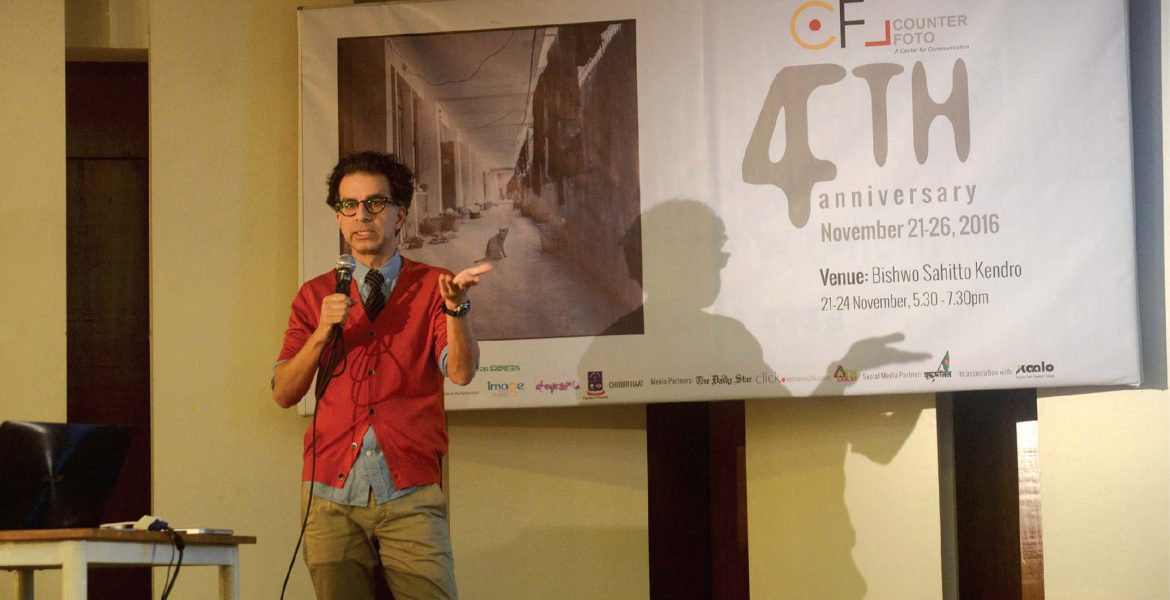Photojournalist Asim Rafiqui shares eye-opening stories about his experiences. Antony Rahman listens in
Thanks to the abundance of news media available to us at the click of a button, we’ve become accustomed to the privilege of being able to see what’s happening almost anywhere in the world. Rarely, however, do we acknowledge those dedicated and hardworking individuals who make this a possibility for everyone at home. Asim Rafiqui has travelled far and wide in his line of duty, reporting from places such as Afghanistan, Israel, and Palestine and has worked for esteemed publications such as Stern, Times, and National Geographic.
Rafiqui has been working as since the early 2000’s. Through his work, he has captured the plight of the most marginalised communities in Pakistan. “The purpose of my work in Pakistan was not to highlight the conditions of the marginalised, nor to give a voice to the voiceless, so to speak. The Pakistan Project is a massive critique of the state and its handling of the various issues that cause these people’s plight.” Rafiqui goes on to say that the Pakistani state uses the law to oppress its destitute people, creating policies that manufacture poverty. Slums are growing as more and more people are forced by the state’s policies to move out of rural areas. “I aim to shed light on the policies and laws that have created this situation, rather than simply focusing on the situation as it is now”, says Rafiqui, “I don’t want to simply show the poverty of those suffering, but to tell their story and show them as people, not as their economic background.”

Photojournalists are known for their creative freedom to play with concepts and ideas and mould them with their own individualistic touch. However Rafiqui’s thoughts reveal what really goes on behind the scenes of working with eminent institutions. “It was actually quite constricting in various ways. Back then, the path to becoming a photojournalist was rather fixed, because few alternatives existed.” he remarked. “You had to rely on the Times and similar publications to work, and all my peers were working for these publications.” He explained that this was around the time that the 9/11 attack happened, and as such every news and media outlet was only looking for people to cover very specific topics, related to fundamentalist Islam, Taliban, and the likes. “It was only after gaining some experience and working with European publications that I was able to branch out and cover different topics.”
Knowing that Rafiqui has served in places like Haiti, Japan, Pakistan and Afghanistan, he revealed his most daunting tasks. “When working on any of those assignments, the challenge was adjusting for the new situation, and understanding the new places as a photographer, without allowing yourself to be sucked in by the mainstream medias narrative,” he replied. “I needed to form my own opinion and decide how I want to present the story, without allowing bias from the mainstream media to taint how I frame the situation.”
Rafiqui reminisces his first few assignments that served as a stepping stone into his career path. “My first big break was given to me by Times Editor, MaryAnne Golon, but that was not my first big breakthrough,” said Rafiqui. “The first truly important story I did was actually not published!” He elaborated that sometime in 2005, he did a story in Haiti which went on to be exhibited in France by Jean Francois at the Visa pour l’Image, the premier International Festival of Photojournalism held in Perpignan, France. “This was where I met with the editors of National Geographic and Stern. It was around this time I began to be taken seriously as a photojournalist. Afterwards I began exploring non-linear, non-traditional means of conveying my point through different mediums rather than just photography.”
Working in war-ridden and poverty-stricken places on a regular basis Rafiqui has observed a lot of the world. After achieving so much he manages to remain empathetic and full of humility. “I completely reject the idea of getting caught up in my own emotional distress when I’m working,” he states firmly. I chose to be there, to see these things, and I can always leave and come back to my family and friends to get away from it. The people in question are the ones suffering, and my discomfort is insignificant compared to theirs. To abandon my work after simply perceiving their circumstances would be extremely irresponsible of me,” with that, the revered photojournalist wraps up.

